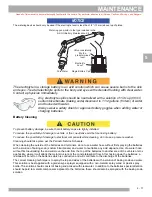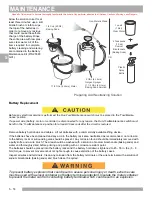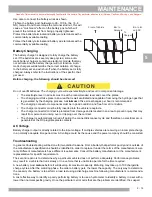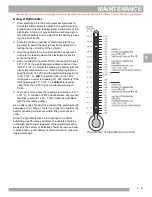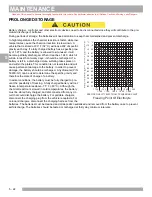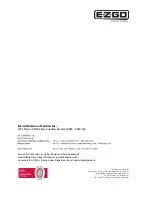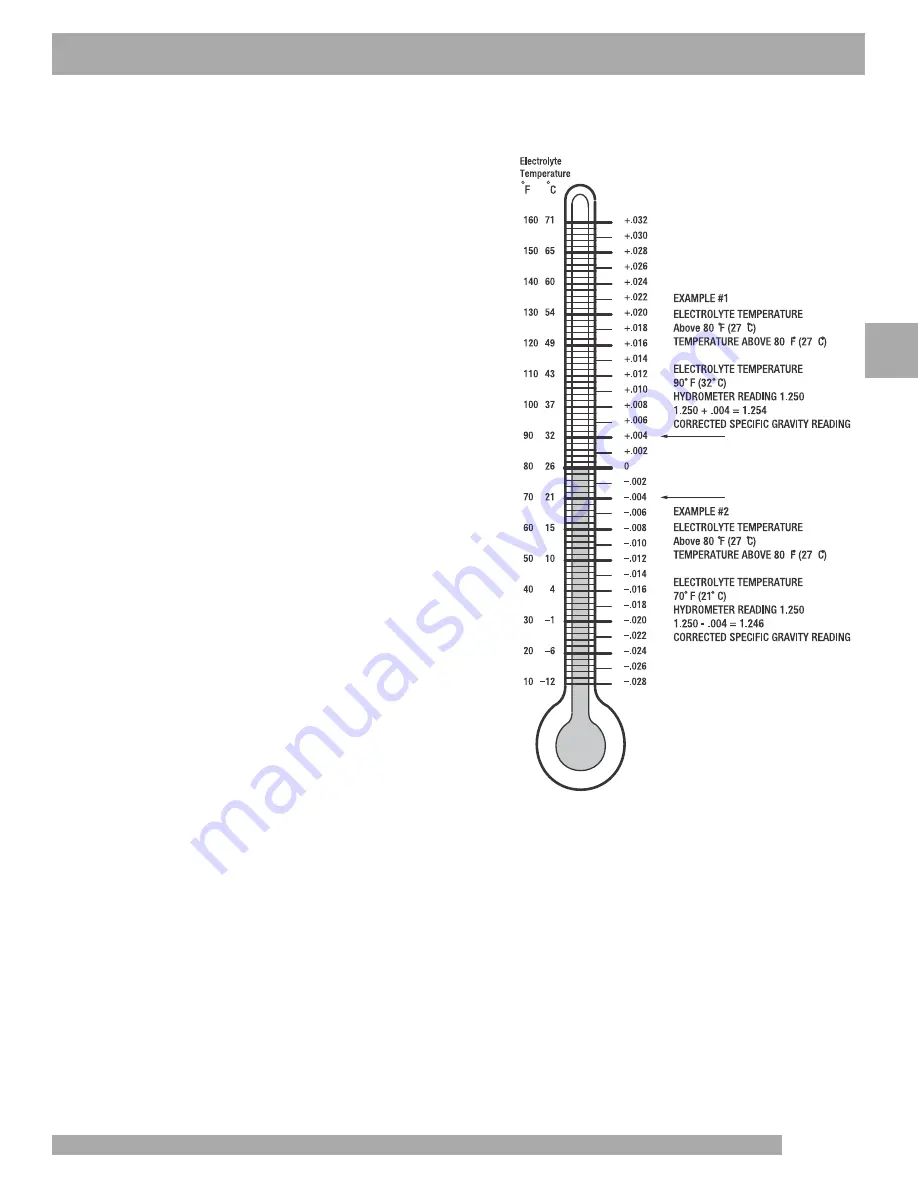
5 - 21
MAINTENANCE
Read all of this manual to become thoroughly familiar with this vehicle. Pay particular attention to all Notices, Cautions, Warnings, and Dangers.
5
Using A Hydrometer
1. Draw electrolyte into the hydrometer several times to
permit the thermometer to adjust to the electrolyte tem-
perature and note the reading. Examine the color of the
electrolyte. A brown or gray coloration indicates a prob-
lem with the battery and is a sign that the battery is near-
ing the end of its life.
2. Draw the minimum quantity of electrolyte into the hy-
drometer to permit the float to float freely without con-
tacting the top or bottom of the cylinder.
3. Hold the hydrometer in a vertical position at eye level
and note the reading where the electrolyte meets the
scale on the float.
4. Add or subtract four points (.004) to the reading for every
10° F (6° C) the electrolyte temperature is above or be-
low 80° F (27° C). Adjust the reading to conform with the
electrolyte temperature, e.g., if the reading indicates a
specific gravity of 1.250 and the electrolyte temperature
is 90° F (32° C),
add
four points (.004) to the 1.250
which gives a corrected reading of 1.254. Similarly if the
temperature was 70° F (21° C),
subtract
four points
(.004) from the 1.250 to give a corrected reading of
1.246.
5. Test each cell and note the readings (corrected to 80° F
or 27° C). A variation of fifty points between any two cell
readings (example 1.250 - 1.200) indicates a problem
with the low reading cell(s).
As a battery ages the specific gravity of the electrolyte will
decrease at full charge. This is not a reason to replace the
battery providing all cells are within fifty points of each
other.
Since the hydrometer test is in response to a vehicle
exhibiting a performance problem, the vehicle should be
recharged and the test repeated. If the results indicate a
weak cell, the battery or batteries should be removed and
replaced with a good battery of the same brand, type and
approximate age.
Hydrometer Temperature Correction











